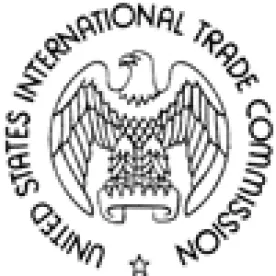In a recent decision clarifying the legal standards of the International Trade Commission’s domestic industry requirement, the Commission has upheld, with modified reasoning, Chief Administrative Law Judge Bullock’s initial determination (“ID”), finding no domestic industry in Certain Carburetors and Products Containing Such Carburetors, Inv. No. 337-TA-1123, Comm’n Op. (Oct. 28, 2019). This opinion provides useful guidance to all ITC practitioners seeking to satisfy the jurisdictional predicate of the ITC’s economic domestic industry requirement. In emphasizing the flexible approach for domestic industry, without an expectation that “large multinational companies” invest “larger dollar amounts” than smaller companies, this opinion serves as a useful reminder that the ITC remains open for business for a broad group of national and multinational companies—across all technologies—having varying levels of investments in the United States.
As we summarized in an earlier blog post, complainant, Walbro, LLC, filed an ITC complaint alleging that several respondents infringed its carburetor patents. The respondents filed a motion for summary determination that Walbro failed to satisfy the domestic industry economic prong. The ID originally found that Walbro’s domestic industry investments were too low to be significant, when compared against complainant Walbro’s U.S. and worldwide sales of its domestic industry products—the only data points available for comparison. ID (Order No. 77 at 4-7). The ID also noted that there has been no Commission precedent in the past four years finding the existence of a domestic industry where the claimed economic prong investments represented less than 5% of a complainant’s U.S. sales of its domestic industry products, suggesting that litigants at the ITC had to show that their domestic industry investments met at least 5% of sales as a threshold in order to prove a significance. Id. This would have been a marked shift in the law had the Commission chose to adopt such a minimum threshold requirement. However, the Commission declined to adopt the statements in the ID suggesting that a “significant” or “substantial” domestic industry investment must amount to at least 5% of a domestic industry product’s sales. Comm’n Op. at 1-2, 26-27.
Importantly, the Commission emphasized that it does not adopt the ID’s suggestion that a minimum threshold amount or percentage exists in determining the significance of domestic industry investments, largely because domestic industry investments must be evaluated on a case-by-case basis. Id. at 26. The Commission clarified that “[t]here is no requirement that proof of the economic prong is dependent on a minimum monetary expenditure.” Id. at 27. The Commission likewise declined to adopt the ID’s assertion that multinational companies should be expected to invest “larger dollar amounts” in order for their investments to be deemed significant or substantial, as significance is generally based on the marketplace conditions of the domestic industry products protected by the asserted patents. Id. at 27-28.
Here, Walbro calculated its domestic industry investments for each asserted patent using a sales-based allocation, by using percentages of sales of the domestic industry products as compared to Walbro’s total sales revenue. Id. at 11. Walbro then applied these percentages against its employee salary investments, equipment expenses, and facility expenses, for calculating its allocated domestic industry investments in the domestic industry products. Id. But because Walbro failed to produce sufficient evidence (other than its total U.S. and worldwide sales) that would provide sufficient context to Walbro’s sales-based allocations, the Commission concluded that the ID did not err in concluding lack of a quantitatively significant domestic industry based solely on the absolute allocated values. Id. at 14-26.
The Commission emphasized the importance of contextual evidence with respect to a complainant’s “operations, the marketplace, or the industry in question” or “other contextual facts” in supporting a domestic industry analysis. Id. at 17, 19. The Commission also reiterated that “the magnitude of the investment c[ould] not be assessed without consideration of the nature and importance of the complainant’s activities to the patented products in the context of the marketplace or industry in question.” Id. at 18. Here, Walbro submitted no evidence or arguments to substantiate the nature and significance of its own domestic industry activities with respect to the domestic industry products. Id. at 19. For example, Walbro did not provide any evidence as to the company’s operations, the marketplace, the industry in question, “comparisons or explanations of added value” of its domestic activities, nor “evidence of its foreign-related investments for the Asserted Patents.” Id. at 13-17. In addition, despite Walbro recognizing that the word “significant” denoted “an assessment of the relative importance of the domestic activities,” it failed to provide any such assessment. In fact, it was the CALJ that first assessed the domestic investments in the ID.
The Commission also clarified the Federal Circuit’s holding in the Lelo case regarding the quantitative and qualitative factors in the domestic industry analysis. The Commission rejected Walbro’s argument that certain qualitative evidence could resuscitate its anemic quantitative domestic industry economic prong evidence. Rather, the Commission reasoned that Lelo Inc. v. Int’l Trade Comm’n, 786 F.3d 879 (Fed. Cir. 2015) does not require an analysis of the qualitative factors when an assessment of the quantitative evidence alone supports a finding that a complainant’s domestic industry investments were insubstantial or insignificant. Id. at 22-26. As stated in Lelo, “[q]ualitative factors cannot compensate for quantitative data that indicate insignificant investment and employment.”
Although the Commission declined to adopt a minimum threshold for domestic industry investments in this opinion, it is an important reminder to complainants that offering sufficient evidentiary support to provide context to their domestic industry investments is a critical piece of the puzzle. Keeping in mind that domestic industry is analyzed on a case-by-case basis, and the types of relevant and sufficient evidence can differ from one case to the next, complainants should consider providing such contextual evidence on not only their own business (or that of their domestic industry licensee), but also regarding the relevant industry as a whole. Further, if complainants have overseas operations that involve the domestic industry products, they should be prepared to provide evidence regarding the extent their domestic industry activities add value to those products. Finally, it is important to note that with the ITC’s emphasis that the domestic industry analysis should reflect a “flexible approach” without an expectation that “large multinational companies” invest “larger dollar amounts” than smaller companies, the ITC remains open for complainants (whether national or multinational) having varying levels of investments in the United States, so long as those investments properly qualify as a significant domestic industry.








 />i
/>i

